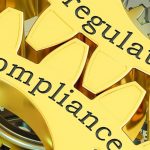UL New Testing Facility
“Time is running out! Act fast and get in a line at the new UL testing facility before you run out of time to certify your new fire safety products!
With about a year to go before the UL 2020 standards take affect, manufactures are lining up to test their new products at the new UL testing facility. Built in early 2018, the new UL testing facility was designed to enable manufactures to test the more than 250 technical updates which are tested in approximately 50 different lab tests. “
NORTHBROOK, Ill. – February 8, 2018 – UL, a global leader in safety science, today announced new requirements for UL 217 – Standard for Smoke Alarms, 8th edition and UL 268 – Standard for Smoke Detector Systems, 7th edition that include criteria to reduce nuisance alarms and address smoke characteristics between a fast moving and smoldering polyurethane foam fires. To help manufacturers test the quality and effectiveness of their smoke alarm and smoke detector products against the new requirements outlined in the UL Standards 217 and 268, UL has opened a new state-of-the-art Smoke Detection Test Laboratory at its Northbrook, Ill. campus just north of Chicago.
Evolution of a Standard – Research Leads the Way
UL conducted research for the National Fire Protection Research Foundation that showed smoke characteristics are different between fast moving and smoldering polyurethane fires. Additional research found that fire dynamics in a home have changed over the last several decades. Newer synthetic materials in the home, more open layouts and lighter construction materials all burn hotter and faster, leading to escape times being reduced from an average of 17 minutes to three-to-four minutes.
According to the National Fire Protection Association (NFPA), nuisance alarms are the leading reason for disconnected smoke alarms. In order to enable manufacturers to produce more responsive alarms that don’t introduce nuisance alarming during cooking, UL conducted a research project to develop data on smoke characteristics during normal cooking events. The research led to new test requirements for cooking alarm tests.
[pld_post_list]






